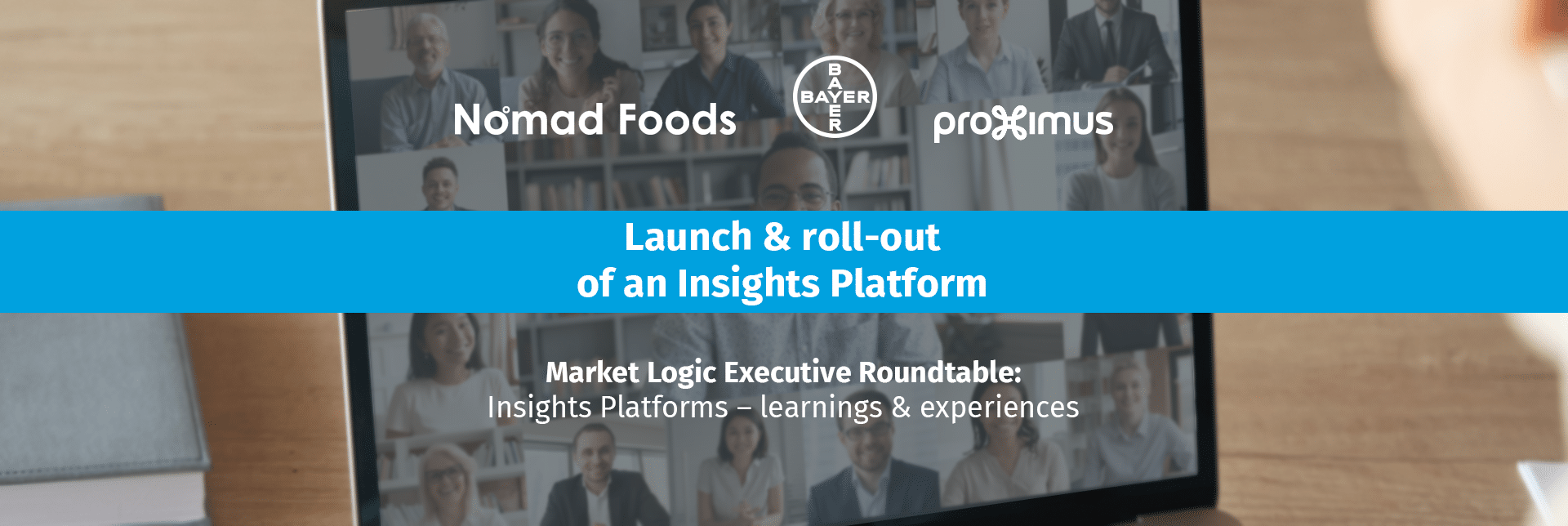On day two of our Insights Executives virtual roundtable, we heard how some top industry leaders have successfully rolled out their Market Logic insights platforms. Launching a virtual platform presents its own challenges during a pandemic, but as the panellists described, the benefits far outweigh the risks.
At Nomad Foods, Europe’s leading frozen food company, the pandemic emerged just one month after the launch of their new insights platform, “Insights On Demand.” Laura Craft, shared that the pandemic breathed new life into their mission of “serving the world with better food.”
Navigating the global health crisis meant providing real-time, relevant insights to their internal stakeholders so they could better meet growing food demands. Their new insights platform transformed the department from the “dinosaur age” of multiple share drives to a world of centralized insights with fast turnaround. Top executives’ feedback has been glowing. Read more about Nomad Foods’ “rules of engagement” here.
Annalena Lahav, Customer Insights Manager at Bayer, had similar experiences with the “Quest” platform. Only launched as a pilot program in 2019, feedback has been so overwhelmingly positive it will be broadened soon to include Oncology and Cardiovascular Health. “We won’t stop now,” said Annalena.
The overall vision of the platform is to become a Bayer-wide one-stop-shop, used across all therapeutic areas and divisions for insights and research-related information.
At Proximus, Belgium’s largest communications and ICT provider, Luc Rooms, Head of Market & Competition said the “Market and Customer Knowledge Center,” which is now in pre-launch phase, is already destined for a broad audience.
“We wanted to create a digital environment for our employees to enable them to make smarter decisions going forward,” said Luc. “That’s the key goal of this whole project.” Internal surveys have found that even IT is eager to get rid of the existing platform!
At Mondelez, said Julie Anne Philip, Director Consumer Insights & Analytics for the new Canadian business unit, a driving force behind introducing the global “iQuest” platform in the was the need to leverage the power of a global organization at the local level. She also wanted to provide insights teams with some breathing room to focus on their craft.
“There’s some deep thought and time that’s required to bring order out of chaos, develop plans for competitive encroachment, and understand where the consumer is going.” Thanks to iQuest, they can now embed insights and analytics and spur curiosity across the organization – not just among insights teams.
In summary: design thinking and driving influence
In the Q&A session, we noted how Proximus is applying design thinking principles to create a topic focus for their platform. Laura explained how Nomad Foods applied similar principles for their new rules of engagement, because “everyone sees insights differently, from finance to marketing to the sales team.” Executives, for example, get email teasers, which have been very effective in driving activity on the platform.
At Bayer, we noted, use cases are also about understanding vernacular, informal language. Annalena said Bayer is using their understanding of how things are discussed informally across the business to map natural language to corporate abbreviations that do not appear in the content.
We asked Luc how Proximus plans to revisit the progress made from the initial benchmark survey. His team will continue to monitor use cases qualitatively with satisfaction feedback, and also quantitatively with usage metrics, as the living, breathing platform continues to grow. This echoes what we heard from Florence Rainsard at Pernod Ricard – the platform continues to allow the reshaping of ideas and stories as user needs evolves.
Wrapping up, Julie Anne said their local platform is helping the team to build collaboratively and iteratively throughout the organization. This is in stark contrast to the traditional insights approach, which was “to take the business question, leave, and come back two months later with a dog and pony show. Now, we have an opportunity to really think about driving influence”.
